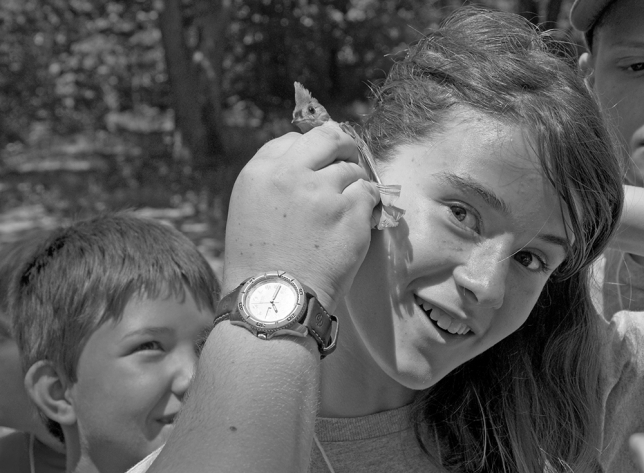Access to nature is as much about the quality of places as their quantity

Near urban Chicago, a naturalist at Indiana Dunes State Park reveals the sound of a tufted titmouse heartbeat to a visitor.
The vast majority of adults agreed that there are “plenty” of places to enjoy nature — a finding that held across race and ethnicity and residential location. However, when asked about places near where they live, minorities and urban residents perceived fewer places nearby to enjoy the outdoors. In addition, parents of minority children reported that there were fewer parks nearby compared with parents of white children. In terms of the quality of places, overall, less than one-third of adults were very satisfied with places for outdoor and nature recreation near where they live. The social safety of places (traffic, speeding vehicles, dangerous people, etc.) was an important concern for all parents and children, and even more so for minorities and urban residents.
Provide socially safe and satisfying places outdoors, especially for urban and minority adults and children
Our research provides general insights into what produces dissatisfaction with parks and open spaces, including traffic, speeding vehicles, dangerous people, and noise. Other concerns centered on the physical environment, especially the lack of opportunities to explore and to find peacefulness. Spend time and effort listening to the particular concerns that may be present in specific locations and among specific groups. Program planners and communications professionals should also pay attention to how they label and frame activities. For example, among certain minority groups, interest in hiking paled in comparison to interest in taking a walk outdoors, likely due to differences in perceptions about the social and geographic familiarity and safety of the two activities. Our results suggest providing culturally relevant experiences will increase participation and provide further avenues for deeper engagement with the natural world for all groups.
Work to lower the perceived costs of participation in outdoor recreational activities
The majority of adults in our focus groups presumed that high-quality nature experiences mainly occur in environments that are remote, difficult to access, and relatively undeveloped. Accessing these types of places requires . . .
- financial resources (to pay for specialized equipment and training, as well as the cost of transportation)
- time
Both of these are in short supply.
Perhaps not surprising then, for adults in our survey, interest in activities that often require significant discretionary income and leisure time increased in tandem with household income. In contrast, activities that take place more locally — such as taking a walk outdoors, visiting nature-education centers, or watching or feeding birds and other wildlife — did not appear to evoke the same perceptions of inaccessibility and, thus, seemed to prompt interest from a diverse array of adults.
